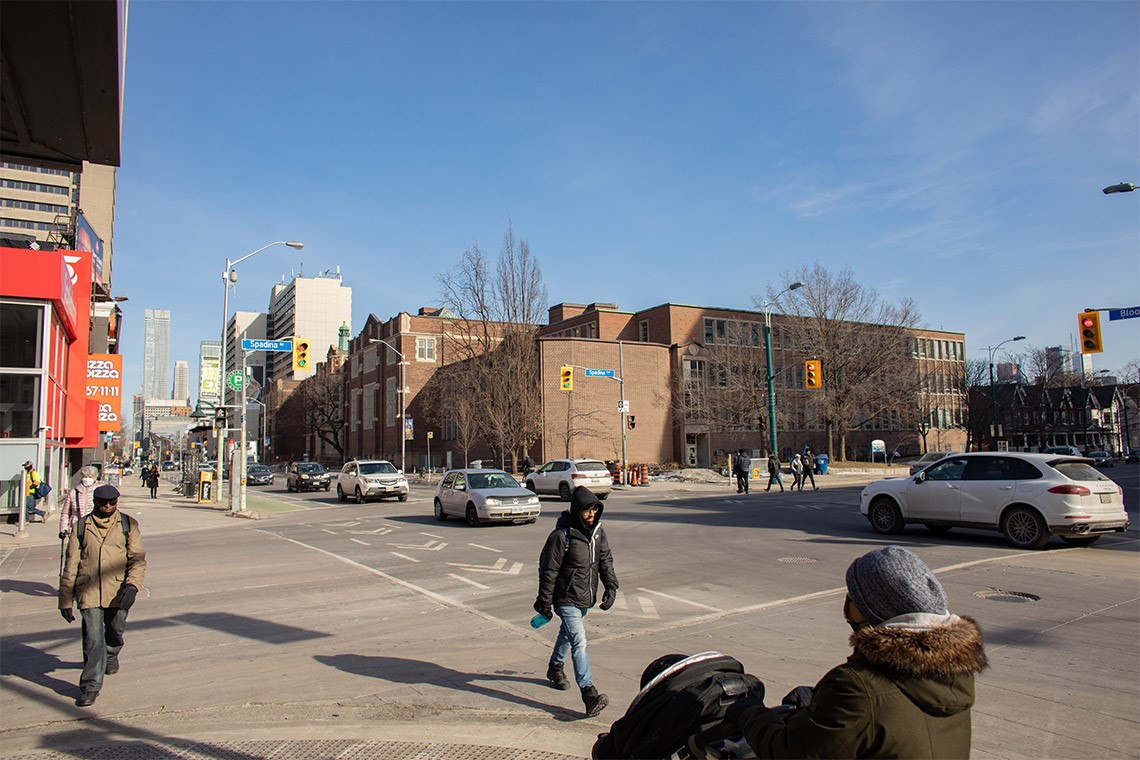U of T explores university housing development at Bloor and Spadina

The University of Toronto is in the early stages of exploring how the northwest corner of the St. George campus can be revitalized to provide much-needed and attainable university housing, including academic and amenity space – all while supplying carbon-friendly energy and advancing Indigenous place-making.
The proposed development of “Site 1” – bounded by Bloor Street West, Spadina Avenue, Huron Street and Washington Avenue – would provide hundreds of apartment-style units for students, faculty and staff, as well as their families. It would also provide academic space for the Ontario Institute for Studies in Education (OISE) and the School of Continuing Studies, and would continue to host the University of Toronto Schools, which is a current occupant of 371 Bloor West.
Envisioned as a major gateway into the northwest quadrant of the St. George campus, the proposed development also aims to better link the university with the surrounding neighbourhood and provide more open spaces for community-geared activities.
Scott Mabury, U of T’s vice-president, operations and real estate partnerships, said the Site 1 project exemplifies U of T’s Four Corners Strategy, which seeks to advance the university’s mission to build much-needed university housing and innovation space while also contributing to the university overall and enhancing the vitality of city life.
“This site, located at a prominent downtown intersection, represents a unique opportunity for U of T to help address its growing need for housing, provide renewed academic space and enrich the surrounding neighbourhood,” Mabury said.
He added that the site would also house an energy centre and electrical distribution hub that would make important contributions to U of T’s ambitious goal of achieving a climate-positive St. George campus by 2050.
“This site serves as an ideal location from which to supply the northwest quadrant of the St. George campus with energy derived from high-efficiency, zero-carbon technologies,” he said. “As such, it will play a vital role in helping us meet our greenhouse gas reduction targets.”
Read more (Rahul Kalvapalle)
